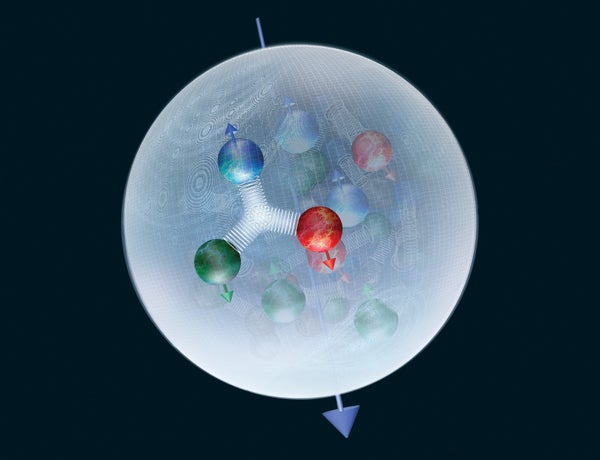This article was published in Scientific American’s former blog network and reflects the views of the author, not necessarily those of Scientific American
Last week, a new kind of heavy particle was discovered by physicists using the Large Hadron Collider. As reported by my colleague Lee Billings:
“The particle, known as Xi-cc++ (pronounced “Ksī-CC plus-plus”), is composed of three smaller elementary particles called quarks—specifically, one lighter-weight ‘up’ quark like those found in protons and neutrons and two ‘charm’ quarks, which are a heavier and more exotic variety.”
For context, here’s a peek inside a more familiar particle—the proton—and a visual guide to other theoretical quark-gluon combinations. (For more on gluons and quantum foam, check out “The Mysteries of the World's Tiniest Bits of Matter” by Rolf Ent, Thomas Ullrich, and Raju Venugopalan, from the May 2015 issue of Scientific American).
On supporting science journalism
If you're enjoying this article, consider supporting our award-winning journalism by subscribing. By purchasing a subscription you are helping to ensure the future of impactful stories about the discoveries and ideas shaping our world today.

Credit: Moonrunner Design
